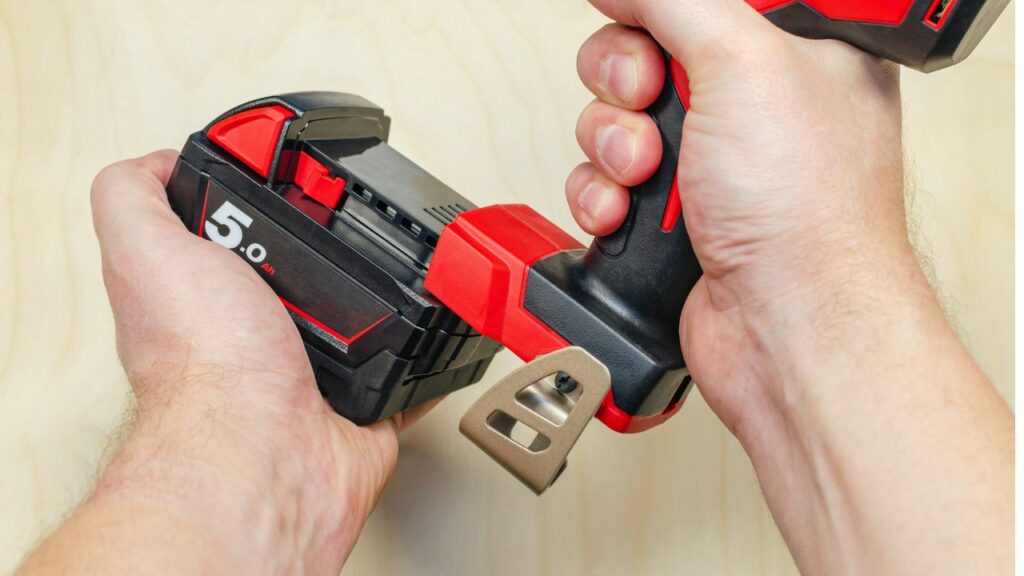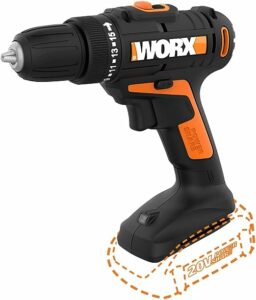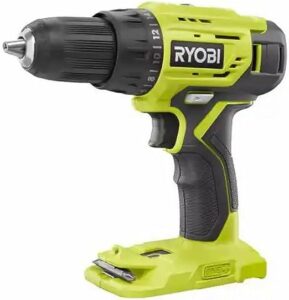Last Updated on October 16, 2023 by Pro Handyman Australia – Editorial Team
A drill consists of multiple components, with the motor being its primary driver and the power source defining its operation type. The two primary motor types are brushed and brushless, while power sources can be either corded (AC) or cordless (DC). Below, we delve deeper into these crucial drill parts and their specifications.
The Heart of the Drill: The Motor
The motor propels the drill, dictating its efficiency and power. There are two primary motor types:
- Brushed: A traditional motor type that’s been in use for years.
- Brushless: A modern version that, while pricier, offers benefits like electronic control for better tool management. Investing in brushless means obtaining a tool with integrated electronic circuitry. This doesn’t necessarily denote higher power but promises better tool control.
Powering the Drill: Drill Types Based on Power Source
- Corded (AC): Offers continuous power without the need for recharging.
- Cordless (DC): Needs periodic recharging but provides flexibility. They come in various voltages:
- 4V/8V: Ideal for light tasks, e.g., screwdriving in delicate materials.
- 12V: Suitable for up to 80% of professional tasks due to its compactness.
- 18V/20V/24V Max: A range catering mainly to professionals with both light and heavy-duty options.
- High-voltage (36V and above): Less common but designed for power-intensive tasks like concrete drilling.
With this understanding, you’re better equipped to determine the right drill for your specific needs.
Battery Chemistry: Evolution and Advancements

The realm of cordless drills has seen a shift away from nickel-metal hydride (NiMH) and nickel-cadmium batteries (NiCad). It’s rare to spot NiCad batteries these days, and it’s advisable to avoid them. Modern drills predominantly harness the prowess of lithium-ion battery technology. These batteries endow drills with enhanced power and extended operational durations. Their high power densities mean more power within a compact size, eliminating concerns of battery memory effect.
Functional Components and Operation
The Science Behind Drill Triggers
Going beyond the simplistic tools of 4V/8V range, most cordless drills today come equipped with a variable speed trigger. This feature allows users to increase speed and power gradually, simply by pulling the trigger more. In drills with brushless motors, the triggers incorporate multiple wire leads that work synchronously with a controller, making it an intricate piece of electronic engineering.
The Role of the Rocker Switch
The rocker switch serves a fundamental function: it controls the direction of the drill’s chuck. By switching it, you can change the direction from forward (clockwise rotation) to reverse (counterclockwise). When the switch is positioned in the center between these two settings, it locks the drill, preventing any movement.

Navigating the Gear Selection Switch
Many drills offer a gear selection switch, usually located at the top of the tool. It’s essential to understand that there’s an inverse relationship between the drill’s speed and torque. In simpler terms, a higher speed results in lesser torque and vice versa. While the majority of drills feature a two-speed gearbox, there are advanced models boasting up to four-speed settings. Some modern drills elevate the experience further by integrating electronic controls, often positioned above the battery. Few even offer Bluetooth connectivity, allowing users to customize their tools via smartphones or tablets.
Deciphering the Mode/Clutch Collar
A rotating collar, located just behind the chuck, plays a crucial role. This collar lets users select torque settings, ensuring the drill doesn’t rotate too aggressively, especially for smaller fasteners. The markings on the collar, though not representing precise torque values, serve as relative indicators. When you turn this collar to its furthest counterclockwise position, typically a drill icon becomes visible. This setting disengages the clutch, granting access to the drill’s full torque. For those using hammer drills, a hammer icon usually follows the drill icon, indicating the hammering function. However, some drills feature a separate mechanism for this.
Chucks: Ratcheting vs. Non-Ratcheting
In the realm of cordless drills, while a few still employ keyed chucks, especially for larger tasks, most have adopted keyless chucks. Operating them is straightforward: rotate the chuck clockwise to open and counterclockwise to secure. Internally, metal prongs extend to grasp the drill bit firmly. The advanced versions of these chucks incorporate a ratcheting mechanism. When fully tightened, these chucks produce additional clicks, ensuring the bit is firmly in place. It is paramount for users to familiarize themselves with the proper usage of a keyless drill chuck.
User Experience: Drilling Down to Real-Life Insights
When diving into the world of different types of drills, it’s essential to move beyond the technical specs and explore real-life user experiences. This approach offers invaluable insights, letting potential buyers know how these tools fare in practical situations, spanning various models and categories within the diverse spectrum of drills.

Take the Worx WX101L.9, for example. Despite its highly competitive price and promising specs, several users like Ben, a professional carpenter, have mentioned its occasional struggle with dense materials.

On the other hand, Jane, a DIY enthusiast, swears by the Bosch AdvancedImpact for her home projects. She loves the consistent power delivery and appreciates the added safety features.

Then there’s Mike, who recently worked on a large deck project. He invested in the RYOBI ONE and was particularly impressed by its battery longevity and ergonomic design.
Stories like these provide invaluable feedback, allowing individuals to make more informed choices and set realistic expectations. Remember, a drill might boast of high-end specs, but it’s the hands-on user experience that genuinely determines its worth.
Comparisons: Pitting Hammer Drills Head-to-Head
To truly understand the landscape of hammer drills, it’s essential to see how different models stack against each other. Here’s a brief comparison:
| Model | Power (W) | Longevity (hrs) | Price ($) |
|---|---|---|---|
| Worx WX101L.9 | 800 | 5 | 120 |
| Bosch AdvancedImpact | 750 | 6 | 140 |
| RYOBI ONE | 780 | 6.5 | 130 |
From the table, it’s evident that while the Worx WX101L.9 offers the highest power, the RYOBI ONE provides better longevity at a marginally higher price. The Bosch AdvancedImpact balances between the two, with decent power and longevity, justifying its slightly elevated price.
Conclusion
Navigating the world of cordless drills may seem daunting with its array of features and functionalities. However, understanding each component and its purpose not only enhances the drilling experience but also ensures longevity and efficiency of the tool. Whether you’re a professional, a DIY enthusiast, or someone seeking Canberra Handyman Services, taking the time to comprehend these intricacies can make a world of difference in your tasks.
